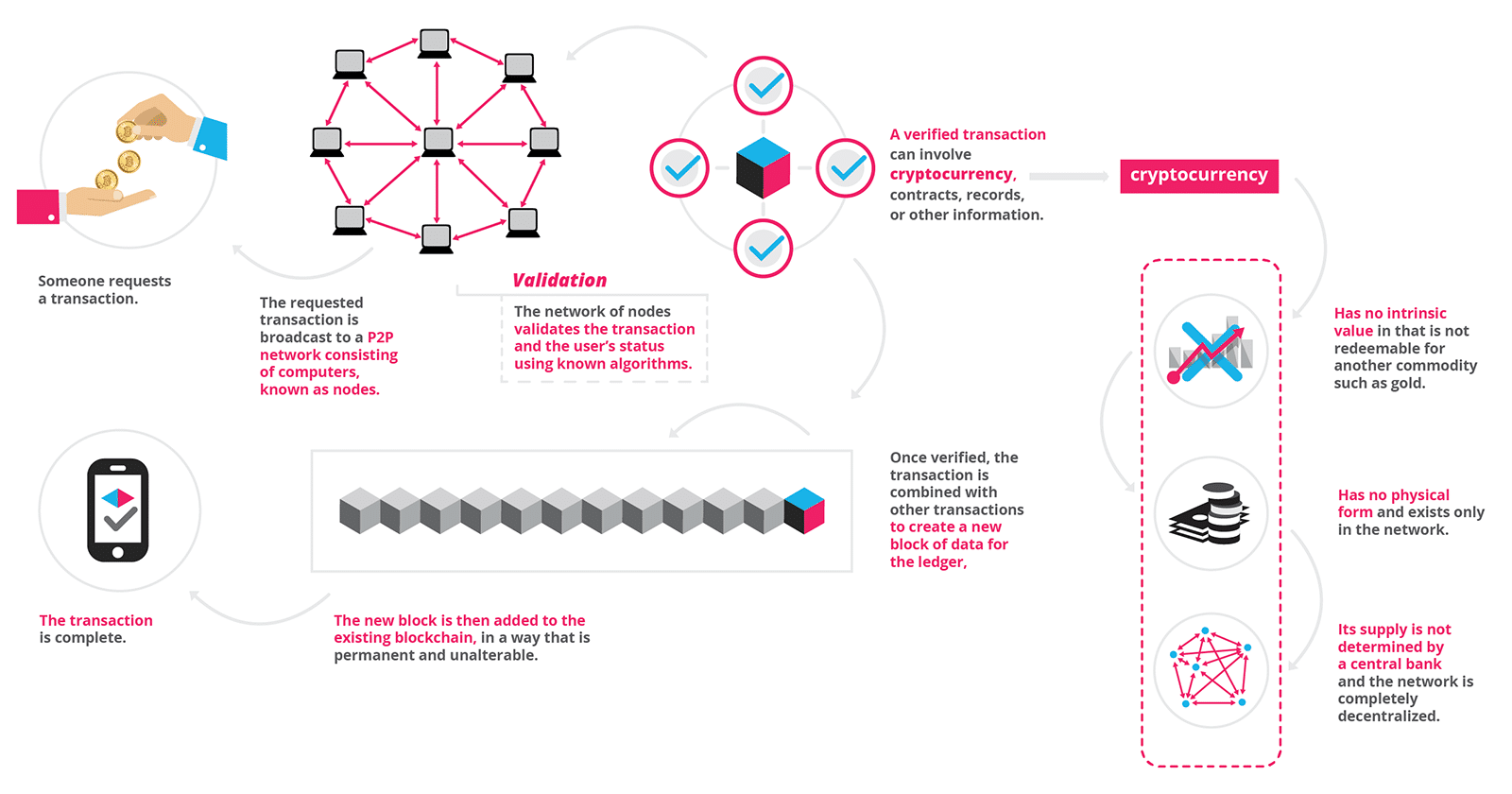Blockchain is, essentially, a replicated shared ledger that operates using a global peer-to-peer network. It uses an algorithmic consensus established by verification through the network to approve entries to records, which it uses to manage transactions through a distributed database of computers. These entries keep getting added to the so-called ‘chain’ of computer code. When one transaction is closed, it is locked, and advanced cryptography and the consensus method of transaction approval mean that the files are as impenetrable to hackers as is currently possible.

Figure 1: Blockchain overview
DecentralizationA. Blockchain offers a decentralised ledger of ownership by recording every transaction in the system, from creation of a block and through any number of transfers made. Every computer tapped into the system stores a copy of this blockchain, and before a transaction can be made the system checks that their version of the blockchain is in sync with all other versions in the network.
B. Blockchain network lacks centralized points of vulnerability that computer crackers can exploit; likewise, it has no central point of failure.
C. Every node in a decentralized system has a copy of the blockchain. Data quality is maintained by massive database replication and computational trust. No centralized "official" copy exists and no user is "trusted" more than any other.Transactions are broadcast to the network using software. Messages are delivered on a best effort basis.Nodes validate transactions, add them to the block they are building, and then broadcast the completed block to other nodes.Blockchains use various time-stamping schemes, such as proof-of-work, to serialize changes.Alternate consensus methods include proof-of-stake, PBFT etc.Growth of a decentralized blockchain is accompanied by the risk of node centralization because computer resources required to operate bigger data become more expensive.

Figure 2: Decentralization
 .
.  .
.  .
.  .
.  .
.  .
.  .
.  Shop
Shop

 Bidding Open
Bidding Open



 Latest news:
Latest news: 